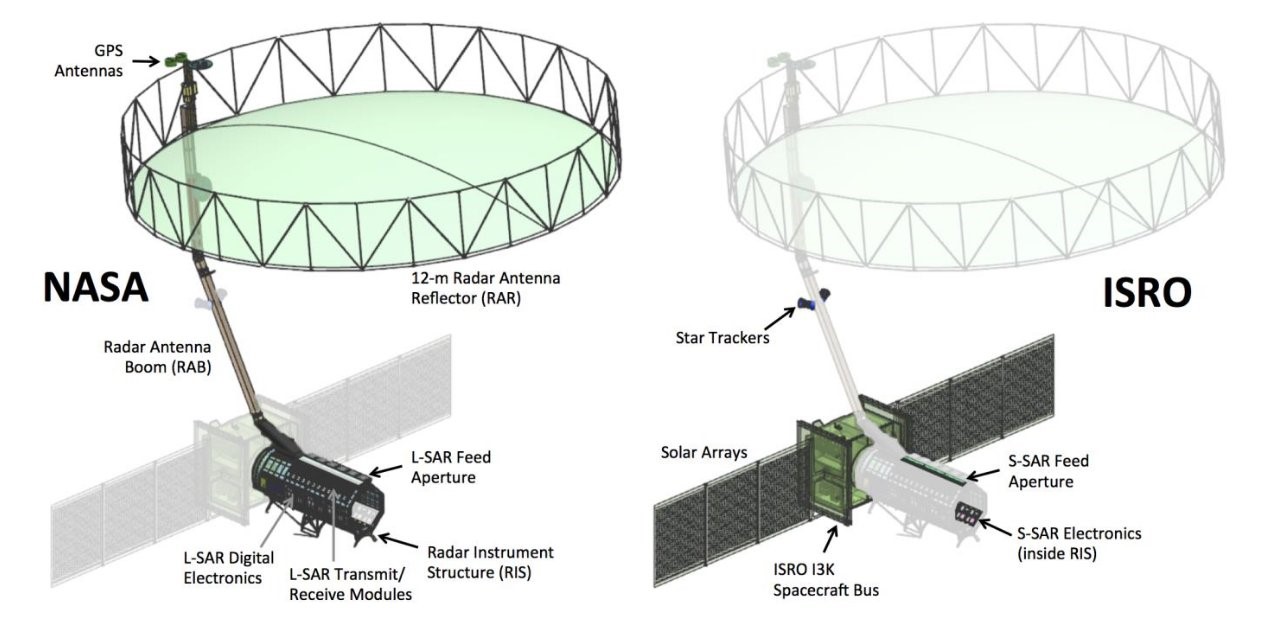The India-US NASA-ISRO Synthetic Aperture Radar (NISAR) mission is set for launch in June 2025, marking a first-of-its-kind collaboration between ISRO and NASA. Designed to study Earth’s dynamic surface changes with unmatched precision, NISAR is expected to offer transformative insights into climate change, natural hazards, and environmental monitoring.
About NISAR Mission:
NISAR is equipped with dual-frequency synthetic aperture radars—NASA’s L-band and ISRO’s S-band. These instruments will enable the satellite to detect surface changes as small as one centimetre, making it possible to monitor:
- Glacier and ice sheet retreat
- Changes in vegetation and forest cover
- Earthquakes, landslides, and volcanic activity
Initially slated for launch in early 2024, NISAR faced delays due to issues with a critical 12-metre deployable antenna, which required redesign during final testing. Although most of the satellite was assembled in the US, key components were developed by India and later integrated in ISRO’s Bengaluru facility.
The component issue required the satellite to be shipped back to the US for upgrades in 2023. Following its return and successful testing, ISRO has now scheduled the launch aboard a GSLV rocket in, though a specific date is yet to be confirmed.
Significance of NISAR:
NISAR is expected to significantly enhance global Earth observation capabilities, providing continuous, high-resolution data that will support environmental planning, resource management, and climate resilience.
The mission also highlights the growing strategic and scientific partnership between India and the United States in space exploration.
Other Key Missions-
- EOS-09 (Earth Observation Satellite-09): This satellite is designed for all-weather, high-resolution imaging during both day and night, enhancing India’s remote sensing capabilities for applications in agriculture, forestry, urban planning, and national security.
- TV-D2 Mission (Test Vehicle-D2) of the Gaganyaan Programme: The TV-D2 mission is part of India’s first human spaceflight initiative, simulating abort scenarios of the Crew Escape System to ensure astronaut safety. This test is crucial for validating escape mechanisms under emergency conditions.
About Axiom-4 Mission:
- In another landmark development, Shubhanshu Shukla is set to become the second Indian to travel into space, 40 years after Rakesh Sharma’s historic 1984 mission. He will be part of the Axiom-4 mission, a private spaceflight undertaken by the US-based company Axiom Space, scheduled for launch in May 2025.
- The mission will transport commercial astronauts to the International Space Station (ISS), further integrating India’s human spaceflight ambitions with international ventures.
Conclusion
The NISAR mission stands at the confluence of cutting-edge technology and international cooperation. As India and the US prepare for its long-awaited launch, the mission is poised to redefine how we perceive, protect, and plan for our planet. With EOS-09, TV-D2, and the Axiom-4 mission lined up, 2025 marks a transformative year for India’s space programme—in science, strategy, and the global stage.








